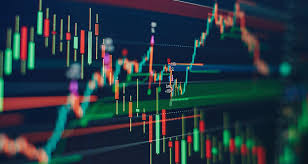10:25 AM What is Forex Trading and How Does It Work? |

The world’s financial markets operate like a vast network of opportunities — and none is bigger than forex trading. The foreign exchange (Forex or FX) market is the largest and most liquid financial market in the world, where trillions of dollars change hands every day. It’s where currencies are bought and sold, where economies interact, and where traders — from central banks to everyday individuals — seek profit from fluctuating exchange rates. In this article, we’ll break down the essentials of forex trading, how it works, and what you need to know before diving in. What is Forex Trading?At its core, forex trading is the process of exchanging one currency for another, with the goal of making a profit from changes in exchange rates. Unlike stock markets, which trade in company shares, the forex market trades in currency pairs — for example, EUR/USD (Euro against the US Dollar) or GBP/JPY (British Pound against the Japanese Yen). Key Features of the Forex Market
How the Forex Market WorksThe forex market is decentralized, meaning it has no central exchange. Instead, it operates through a global network of banks, brokers, and financial institutions. Transactions take place electronically over-the-counter (OTC), with different trading sessions corresponding to financial hubs like London, New York, Tokyo, and Sydney. The Role of Currency PairsCurrencies are quoted in pairs because you are always buying one currency and selling another simultaneously. For example:
Who Trades in the Forex Market?The participants in forex trading are diverse:
Why Trade Forex?
Basic Concepts in Forex TradingBefore opening your first trade, it’s important to understand the following: PipThe smallest price movement in a currency pair. SpreadThe difference between the buying (ask) and selling (bid) price of a currency pair. Leverage & MarginLeverage allows you to control a larger position with a smaller deposit (margin). For example, 1:100 leverage means you can trade $100,000 with just $1,000. How to Start Forex Trading
Risks in Forex TradingWhile the rewards can be appealing, forex carries significant risks.
Tip: Always practice sound forex risk management to protect your capital. ConclusionForex trading is a gateway to the world’s largest financial market, offering unmatched opportunities for those who take the time to learn its mechanics. By understanding currency pairs, market dynamics, and risk management, you can approach trading with greater confidence and skill. The key to success lies in continuous learning, disciplined execution, and a clear strategy — because in the fast-moving world of forex, knowledge is your strongest currency. |
|
|
| Total comments: 0 | |